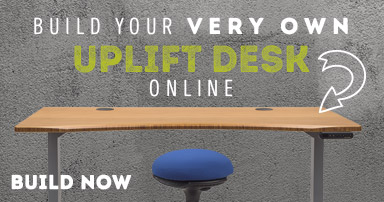Technology Induced Inactivity and You and Me and Everyone
Posted by Human Solution on Sep 29th 2011
Here is a startling statistic: Less than 33% of adults currently fall into the “normal BMI” range. That’s down from 52% in 1987, only twenty four years ago. Never in the history of history has there been such a change in human proportion in a single generation.
If you’re like most people, you don’t get much exercise. The most exercise you probably get all day consists of that incredulous widening of eyes and scooting forward in your seat, along with a slight uptick in heart rate. But it’s interesting to note that the general population gets as much daily “exercise” today as we did in 1987. Still, there are more overweight people, percentage wise, today than there were 24 years ago. So what accounts for the incredible difference in the BMI statistic? The difference is all in the margins, or what we do when we are not “very active.”
People spend approximately half an hour a day being “very active,” another two hours being “fairly active,” three hours “lightly active,” and a whopping thirteen of our waking hours are spent “sedentary.” This is what happens when the vast majority of your day is spent at a desk, followed by a long drive home, and then seated at the dinner table or relaxing on a plush couch. If you’re exercising thirty minutes a day, that’s excellent, and don’t stop, but just know that thirty minutes of exercise a day does not eliminate the “active couch potato” effect.
We used to get a lot more exercise before. As recently as twenty-five years ago, it took a lot more effort to complete normal day to day tasks. There was more effort involved in cooking. There was more effort involved in washing laundry. Even something as simple as making a phone call was tough—you needed to find a phone. All of those possibilities required a certain amount of movement. Now you can reach into your pocket and make your call instead of walking around looking for a payphone, push a button on the microwave and prepare a meal instead of cooking, or drop your clothes in a washing machine instead of washing them by hand. Those little things do add up.
It all changed so quickly. We now live in a future world of technology-induced inactivity. One morning, everyone woke up and found themselves living in the world of The Jetsons, but we are far from the svelte, athletic Jetsons. The point is that who knows what five years from now will bring? Will we need only to stand in front of the mirror and wait for the robot arms to drop out of the ceiling to brush our teeth and shave our stubble?
Obesity is now the number two cause of preventable death in the United States, ranking behind smoking, and it may soon surpass smoking. Occupational obesity is a new threat to the American office worker. The human body was not designed to sit for such prolonged periods of time.
Then again, obesity is not the only factor to consider. People can be obese and healthy, just like people can be thin and unhealthy. The more important factors to look at are blood pressure, cholesterol, blood sugar, and overall health, and unfortunately, these standards are also declining across the board.
This is a huge issue for businesses. It is estimated that businesses around the country take losses of $45 billion per year due to medical reasons and lost time. For years, businesses have screened potential employees based on whether they are smokers. Understandably, business owners have no interest in taking the extra risk of hiring a smoker. Statistically, smokers are just not as healthy as non-smokers. Recently, the same screening process has been in place for the obese.
All things being equal, why would a business owner hire someone with increased risk of poor health? But where are you going to get your work force if five-sixths of the population (and that proportion is rising) are classified as obese? You have heard “diet and exercise” as the answer but there is no easy answer to this question. While eating healthfully is a smart idea, we here at Human Solution can’t help you with that. And as we have discussed in this article, exercise is imperative, but it does not address the problem of spending most of your hours of the day sitting down at work.
Since the problem was caused by incremental changes that add up to huge disproportions, the answer, or at least part of it, can be found in similar incremental changes. We recommend taking a fifteen minute standing break for every hour of work. For you non-math majors out there, that is, over the course of an eight hour shift, two hours on your feet.
A Sit-to-Stand Height Adjustable Desk will allow you to get out of the sitting position. Standing on the job increases blood flow, promotes respiration, and studies have shown that it increases cogitation. You burn 40% more calories standing than sitting. And while you burn barely any calories at all while sitting, the incremental advantage is significant as the days and weeks add up. While we’re at it, if you are interested in a sit-to-stand workstation and you want something that looks really cool, take a look at our Solid Wood Ergnomic Height Adjustable Desks.
People are skeptical of standing at work, but it is such a small adjustment, and the benefits can be immense over the long haul. Ideally, we all would be using something like the Steelcase Sit-to-Walkstation. Walkstations are sit-to-stand desks that include a slow-moving treadmill so that we can amble at one to two miles per hour throughout the workday. Again, it may not seem like much but the benefits are exponential.
It is an interesting problem that our society faces. Technologically, this is the world we always envisioned, the world that moves at the speed of light that we always wanted. But we could not imagine the problems that we would create. Eight, nine, ten hours a day in a chair, only to race home so that we can sit down for a relaxing dinner and night of television: does this sound familiar?
Perhaps we don’t remember that we have the option of getting up and moving around. We will need to remember that we do have that option if we want to continue enjoying long life and good health. Or maybe there is more and greater technology we have not yet imagined. Maybe we can invent new kinds of robot arms to come out of the ceiling and pick up our limbs and move us around in aerobic ways.




